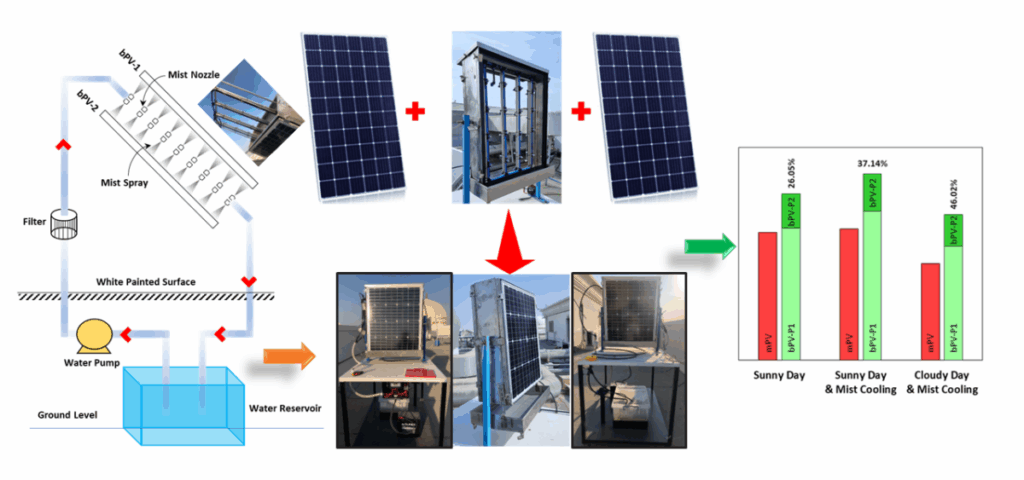Scientists have placed fog mouths in a bifacial PV module and measured under an extremely hot climate. The module appeared to generate up to 37% more electricity on sunny days and up to 46% more on cloudy days compared to standard monofacial panels.
Researchers from the United Arab Emirates (VAE) have developed a new Bifacial PV module cooling technique based on a fog cooler placed between the two sides of the panel. They tested it under the extremely hot climate of the VAE and achieved a number of important profit.
“The novelty of our research is in the development of a new type of solar panel called a sandwich bifacial photovoltaic panel (SBPV),” said the corresponding author Zafar told PV -Magazine. “In contrast to traditional solar panels that suffer efficiency losses in extremely warm conditions, our fog -cooled design maintains a cooler temperature, which considerably stimulates efficiency and energy production.”
To form the SBPV, the team took two monocrystalline 60 W panels from Monokrystallijn and installed them in a back-to-back configuration. In between, a fog cooling system was adjusted to fit into the installation: 16 fog mouths were installed behind the front panel and 16 behind the back. PVC tubes -channeled water from a water tank using a water pump, using a collection plate to collect used water. The workload is 0.7 MPA with a maximum flow rate of 8 l/min.
The system was then installed on the roof of the University of Sharjah van de Vae, under a fixed tilt angle and a height of 30 cm from the surface. A white paint coating is applied to the bottom surface to increase the reflection. An extra mono-facial reference system, also from 60 W, was installed on the same roof. The systems were then tested under three scenarios: sunny days without a fog cooler; Sunny days with a fog cooler; And cloudy days with a fog cooler.
“One of the most remarkable results was the significant increase in energy production we have observed,” said said. “In extremely warm conditions that are typical of the VAE climate, our sandwich-bifacial panels with fog cooling up to 37% more electricity on sunny days and up to 46% more on cloudy days than standard single-sided solar panels. Moreover, the panel remedial performance was dramatically reduced.”
According to the research team, the new system showed an annual energy production of 45.34 kWh/m2 more than mono-facial systems, corresponding to an annual economic profit of $ 5.48/m2. In particular, the expected generation of the SBPV panel was calculated for one year on 167.38 kWh/m2, compared to 122.04 kWh/m2 of the reference module.
“We are planning to investigate further improvements of this technology. Future research will focus on absorbing solar panels in second life in the sandwich design to improve sustainability and reduce the impact of the environment,” said added, and noted that the proposed technology was patented. “Moreover, we will investigate the optimization of the fog cooling mechanism to further reduce water consumption and energy consumption, making it even more practical and environmentally friendly.”
The system was presented in “Maximizing the photovoltaic efficiency of solar energy with fog -cooled sandwich bifacial panels under extreme hot climate conditions“Published in Energy conversion and management. Researchers from the VAEs United Arab Emirates University and the University of Sharjah participated in the research.
This content is protected by copyright and may not be reused. If you want to work with us and reuse part of our content, please contact: editors@pv-magazine.com.

